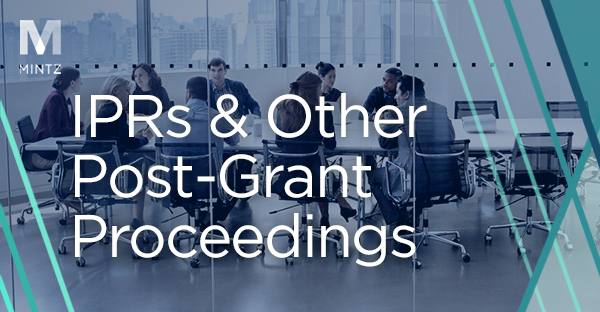Fintiv in Decline?
In 2020, the Patent Trial and Appeal Board (“PTAB”) announced six factors to be used in determining whether to institute an inter partes review (“IPR”) when a fast-moving parallel district court litigation could determine the validity of a patent before the PTAB’s final written decision would be due. The factors were termed the “Fintiv factors” after the primary decision setting forth the analysis—Apple Inc. v. Fintiv, Inc., Case IPR2020-00019, Paper 15 (May 13, 2020). What followed was a sharp increase in institution decisions citing and applying the Fintiv factors, and indeed some IPR petitions were denied institution due to evidence of an expeditious procedural schedule in a parallel litigation, particularly from venues known for speedy schedules such as the Western District of Texas (“WDTX”).
However, data presented during IPWatchdog’s recent PTAB Masters panel shows that the rate of discretionary denials citing Fintiv significantly decreased by the end of 2021. Specifically, the data shows that number of overall decisions denying institution and citing Fintiv for all IPRs and PGRs was down in August 2021 through December 2021 compared to the same months for the prior year. Further, there were no decisions denying institution of an IPR and citing Fintiv for cases with a parallel litigation in the WDTX in September 2021 through December 2021—an unusual development given WDTX’s reputation for speed.
Is Fintiv in decline? First, the PTAB designated a decision applying the Fintiv factors as informative in 2021, which indicates that the factors are alive and well. Second, the overall rate of discretionary denials is steady, which indicates that the Board may be relying on other discretionary reasons such as serial or redundant petitions, or efficient administration. Third, IPWatchdog’s data also shows that although the second Fintiv factor—proximity of the trial date—continues to be highly influential in the PTAB’s Fintiv analysis, the third and fourth factors—investment in the parallel proceedings and overlap of the issues, respectively—also have a significant effect on institution outcomes. Thus, Fintiv and discretionary denials at the PTAB more broadly are not in decline but are rather evolving away from a singular focus on parallel district court trial dates.
Going forward, parties litigating before the PTAB should consider the Fintiv factors comprehensively rather than zeroing-in on the procedural schedule in their parallel litigation. As the data suggests, an aggressive and fast-moving schedule alone may no longer result in a discretionary institution denial.
To learn more from the Mintz IP team, follow us on LinkedIn and check out our Exclusive Rights podcast.
Authors
William A. Meunier
Member
Brad M. Scheller
Member





